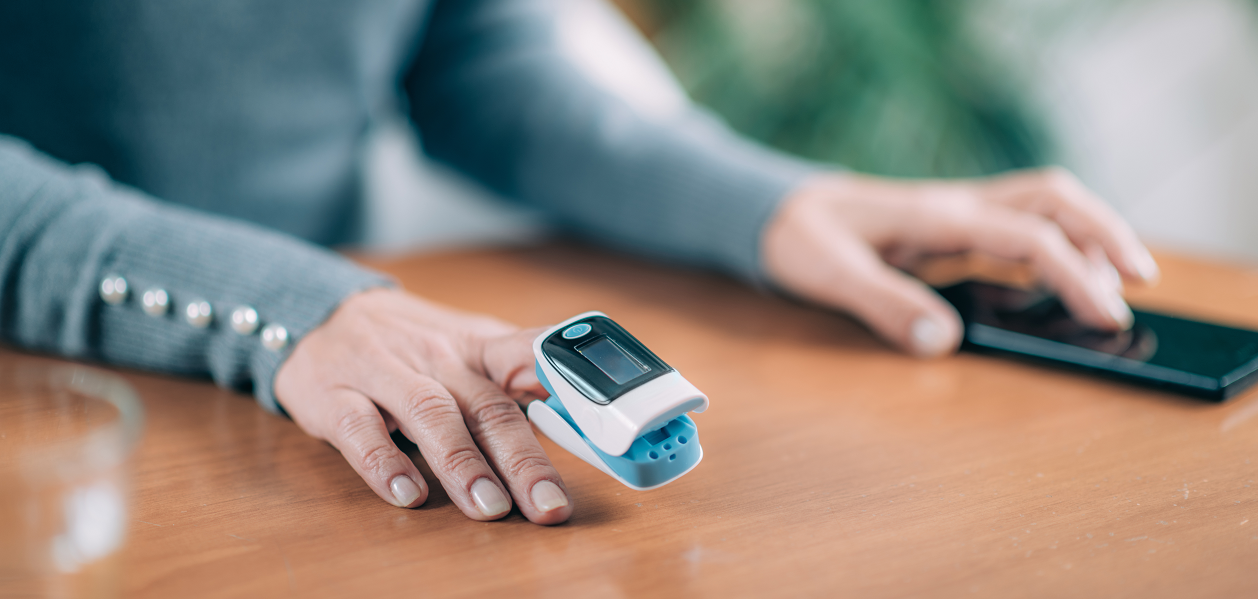How the pandemic gave global healthcare a push
Healthcare technology and services have developed exponentially in the past two years. At TechInnovation 2021, experts discussed the role of medical professionals and the patient journey in a post-pandemic world.
While much of the world came to a halt during the COVID-19 pandemic, the healthcare sector was spurred on by the global emergency and advanced full steam ahead. From the unprecedented pace of diagnostic technology development to the steady rise of telehealth apps like Doctor Anywhere and WhiteCoat, the industry’s response vividly demonstrated its resilience and ability to quickly bring innovations to market.
Today, the industry continues on its path of innovation, improving patient care as well as virtual healthcare experiences every step of the way. One example is the gamification techniques introduced into post-injury rehabilitation. By integrating other digital health technologies like virtual or augmented reality with a rewards system, healthcare professionals can better engage patients in cognitive or physical rehabilitation, while shifting focus away from potential pain.
Speaking at a TechInnovation 2021 keynote session, “Reimagining Health and Wellness Solutions Post-pandemic” on 30 September, a panel of experts described how innovation and investment in new technologies can benefit both healthcare professionals and patients beyond COVID-19.
From lab to bedside to doorstep
As new healthcare developments make their way into hospitals and clinics, it is important to ensure that such treatments are accessible to all patients who need medical attention. Fortunately, groundbreaking and disruptive technology like mobile healthcare can help bring affordable support to even the most remote homes.
One such innovation is 3D printing. Designed to provide greater accessibility to people from all financial backgrounds, this new printing method can help reduce costs when manufacturing essential parts for medical equipment like ventilators, continuous positive airway pressure (CPAP) masks and more.
On top of being affordable, healthcare has to be physically accessible. Interestingly, Japan is already testing the deployment of autonomous vehicles to increase access to care. “Instead of going to the hospital, the hospital goes to you,” said Low Cheaw Hwei, Head of Design at Philips ASEAN Pacific and Design Consulting Asia. This could effectively supply quality healthcare to the elderly with reduced mobility and allow assistance to be readily available in more inaccessible areas.
Additionally, to shift power into the hands of patients, recent self-diagnostic tools like glucometers and heart rate trackers are becoming increasingly attainable and can work as an early warning system to get patients to seek care before symptoms intensify.
“The rise in the ubiquity of self-diagnostic tools such as blood oxygen meters and the advent of new business models such as on-the-go disease testing and tracking will undoubtedly enhance the accessibility to healthcare,” said Jerome Goh, Senior Director for Experience Consulting at EPAM Continuum.
Collaborating for better care
The development of innovative solutions in the healthcare sector is no mean feat and requires extensive research, testing and trials—an effort that can only expand in efficiency with collaboration and continued engagement with stakeholders.
One example is the international initiative, Careables.org that allows patients, healthcare professionals and innovators to co-create health and wellness products that better suit patients’ needs. Through this open and inclusive platform, innovators can draw inspiration from a multitude of sources to develop new technologies that cater to all members of the community.
In another co-designed innovation, the youRlab mobile application generates patient-friendly medical reports and provides patients with self-management tools to reduce the frequency of hospital visits. “We as designers facilitated the process, but the core knowledge came from the doctors,” said Enrico Bassi, Director of OpenDot Fab Lab, highlighting the wonders of a collaborative effort.
While co-design is especially lifesaving in the wake of COVID-19, such partnerships will prove integral in a post-pandemic world as countries continue to face global challenges together.
Innovations to improve the industry
Similar to the disruptive technology described by the panellists, TechInnovation 2021 exhibitors shared cutting-edge solutions dedicated to improving healthcare and wellness systems.
Indonesian manufacturer PT Gerlink Utama Mandiri was a case in point. Their high flow oxygen therapy delivers oxygen to patients more effectively, making it an excellent treatment for chronic respiratory problems including severe COVID-19. Additionally, the rapid and inexpensive one-step COVID-19 colorimetric LAMP detection kit developed in Thailand enables seamless screening for the virus, allowing testing to be carried out on a more reliable scale.
Bringing data to the forefront of patient care, Scandinavia-based DNV-Imatis’ efforts to connect hospitals and healthcare workers to real-time data aims to harness patient data to optimise the quality and safety of patient care while saving costs. Similarly, pharmacogenomics Artificial Intelligence (AI) for Point-of-Care (PoC) Tests, developed at the National University of Singapore, allow clinicians to couple analytics tools with genomic data to curate targeted intervention for a better treatment response and reduced adverse drug reactions.
In addition to solutions for hospitals, healthcare innovation has also made its way into homes with user-monitoring devices. By leveraging AI, co-designed devices such as wearables and electronics can effectively keep an eye on parameters like daily stress levels or movement of the elderly. This new communications channel will allow healthcare professionals to stay informed about worsening symptoms and preventing unnecessary or severe outcomes.
With co-design efforts fuelling the creation of innovative healthcare technologies, patients and professionals alike can look forward to better, more easily accessible care beyond the COVID-19 pandemic. Click here to find out more about cutting-edge healthcare technology featured at TechInnovation 2021

